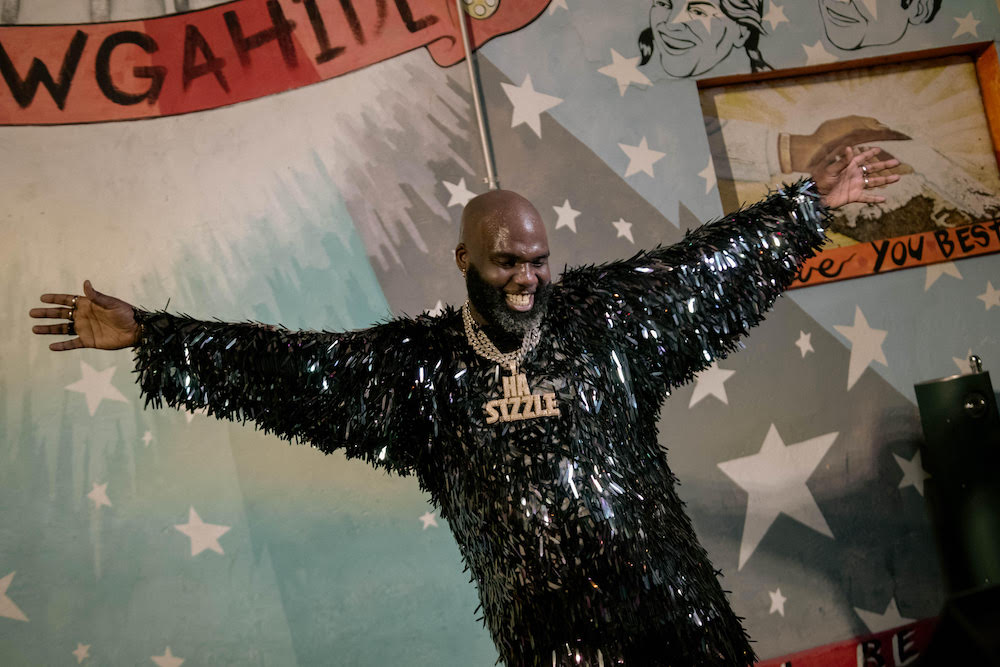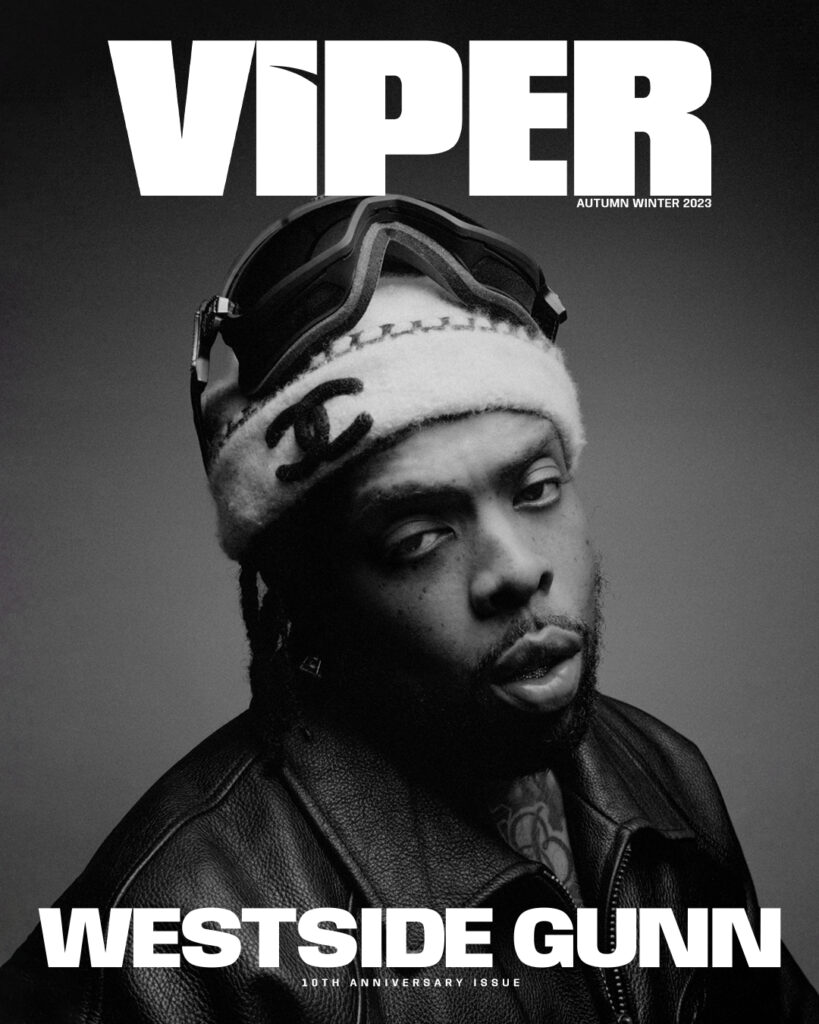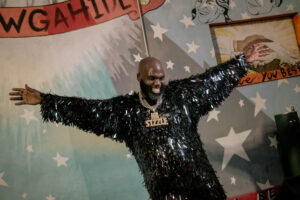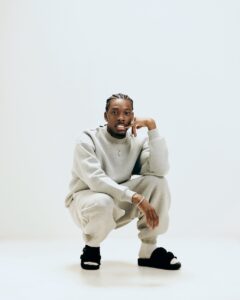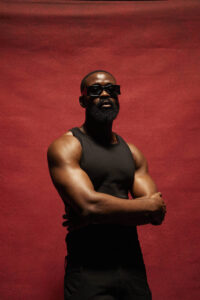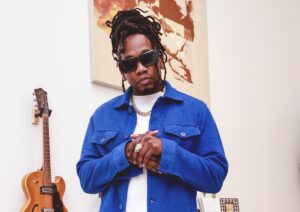HASIZZLE INTERVIEW: For two decades, HaSizzle has been an undeniable force—the self-proclaimed “King of Bounce” whose high-energy, nonstop voice has become the genre’s signature, even when sampled on a global stage by everyone from Drake to Nickelodeon. Now, the New Orleans legend is stepping out from behind the ad-libs to show the world the face behind the iconic sound.
With his new project, ‘Brass & A$$‘, HaSizzle has created what he calls a “gumbo”—a masterful fusion of authentic NOLA bounce with live Jazz, Brass, Blues, and Hip Hop, bringing together an all-star roster of city icons. It’s an album that is both a preservation of his culture’s roots and a radical push into new sonic territory. Having seen his unique style—rapping on every beat—evolve from the post-Katrina bounce scene into a global, genre-agnostic phenomenon, HaSizzle is ready for the world to recognise the source. We caught up with the artist to discuss the lessons of longevity, his goal of taking bounce to the Grammys, and why his music is a pure, unfiltered mandate for joy.
As the self-proclaimed King of Bounce, how has your role and the sound of bounce evolved over the last two decades, and what’s the biggest lesson you’ve learned about longevity in the industry?
When bounce started in the ’90s, it sounded more like early Hip Hop — hook, verse, hook, verse. By the late ’90s and early 2000s, producers started chopping it up and adding those cut-and-paste sounds. I was the last bounce artist to come out before Hurricane Katrina in 2005, so I really came in at the tail end of that shift.
I didn’t model myself after other bounce artists. I wanted to be like Michael Jackson, dynamic and not just another rapper. From the beginning, my style was a lifestyle — nonstop, high-energy, booty-shaking music you can perform live. While other artists were rapping on one beat, I rapped on every beat. I didn’t even realise how different I was until later.
My best friend Magnolia Scooby was the first to put my music out into the world. When YouTube launched in 2005, he uploaded my songs, which is how people like Drake even discovered bounce and my voice. He passed in 2013, but that moment changed everything.
Over 20 years, I stayed live and original. I didn’t like the robot-sounding chopped production a lot of artists used, so I built my own lane. It’s nonstop movement, rooted in Jazz, Blues, Hip Hop and New Orleans sound. Bounce culture belongs to the city, but my style became something that touched every genre. That’s why you hear my voice in commercials for Nickelodeon, Puma, ads in Germany and songs by Drake, Jason Derulo, Kelly Rowland and more.
Two of my very first songs are still in rotation 20 years later and the new generation thinks they’re new. That tells me I did something right — and they still haven’t seen everything I can do.
Your new project ‘Brass & A$$’ is described as a fusion of New Orleans bounce and live brass. What sparked the idea to blend those sounds so intentionally, and how did you make sure the project captured the soulful energy of the city?
To me, this album is a gumbo — the real New Orleans kind. Everybody comes to the city and loves gumbo, and that’s exactly what ‘Brass & A$$’ represents: a mix of everything that makes us who we are. This project is the beginning of me going global. People know my voice everywhere, but they don’t always know my face.
Sometimes I feel like a ghostwriter — folks think my voice is computer-generated, especially when they hear it sampled. I wanted to show the world the person behind the sound and go after something bigger, like a Grammy. Regional artists in New Orleans — especially in Jazz, Brass and Blues — are always the ones who get those awards. So I knew if I was going to make an album in that lane, I had to do it the right way.
To make it authentic, I brought together icons and top artists from the city — people like Irving Mayfield, Partners-N-Crime, Alfred Banks, Fly Boy Keno, Jelly Joseph, Muex and others. These are people who are serious about their craft, and they each represent a real piece of New Orleans. Partners-N-Crime created the bounce Hip Hop style that artists like Drake now pull from, and Jelly Joseph is out here leading Galactic — that’s the level I wanted to tap into.
Everything on the album is live: Brass, Jazz, Bounce, Blues, Hip Hop, choir energy. It sounds like the streets, the second lines, the band rooms, the clubs and the culture all at once. ‘Brass & A$$’ is just the start — I want to create a project like this every time and keep pushing bounce into new spaces.
You’ve secured an incredible roster for the album, from legends to newer voices. What was your vision for curating these collaborations, and what does each artist bring to the overall vibe?
Every artist on this album represents a different part of New Orleans. People think the city is small, but we’ve got uptown, downtown, the West Bank, the East, Kenner, the surrounding areas — and every section has its own sound and flavour.
I didn’t pick people who sounded alike or who would compete with each other. I chose artists whose voices move me — people I’m genuinely a fan of. Nobody on the album has the same style and that was intentional. I wanted the whole city in one pot, but with every ingredient standing on its own. The energy is different on every track, but it still feels like home because it’s all New Orleans.
New Orleans culture is at the heart of your work, and your sound has influenced artists worldwide. How do you see your role in preserving the authenticity of bounce while also pushing it into new spaces?
I look at myself like a bridge. Bounce started in the neighbourhoods — house parties, block parties, the clubs. That’s the root and it’ll always be the root, but my job is to take that same energy and put it on bigger stages so the whole world can feel it. When Beyoncé or Drake uses a bounce sample, people might not realise it’s coming from New Orleans, but it is. That’s why it’s important for me to keep showing the origin — where it really comes from — while also proving that bounce can live in different spaces: with live brass, with jazz, with choirs, even with EDM.
The culture gave me my voice and now I’m giving it back by making sure it’s respected, not watered down. That’s how you keep it authentic and keep it moving forward at the same time. What it did for me though is prove that bounce isn’t local — it’s global. It showed me that my sound can live in any genre, any market, any country. Now it’s about making sure the face matches the voice and the history matches the moment.
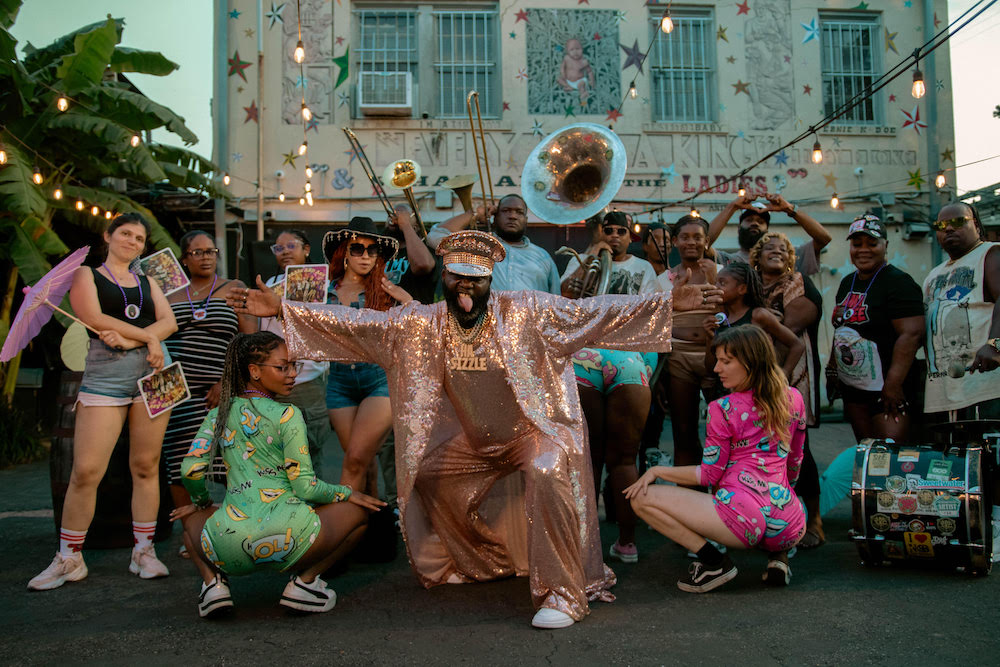
Bounce Music has always been a powerful, unapologetic southern sound, but its visibility has skyrocketed in recent years. As someone who’s been pushing the culture for so long, what is it like to see artists you’ve influenced or the sound you’ve championed become more mainstream, and what do you see as your role in guiding its future?
When I started, bounce was just in the city — house parties, block parties, the DJs in the clubs. Nobody was thinking about it going global. Now you hear it everywhere: Drake, Jason Derulo, commercials, fashion campaigns, overseas. A lot of people don’t even realise it’s me they’re listening to — they think the voice is computer-generated because it’s been sampled so much. But that just shows how far the sound has traveled.
Do I love seeing it go mainstream? Yeah. But sometimes the culture gets taken without the credit. People use the sound but don’t always say where it came from or who built it. That’s why I make sure I show up — the face with the voice, the history with the sound. I don’t let it float around without context.
My role now is to protect it and expand it at the same time. I keep the roots — the call-and-response, the street energy, the live performance — but I’m also bringing it into places people never thought bounce would live: brass bands, jazz, film, ads, Vegas shows, international stages. I’m guiding it so the world hears it, but the culture stays connected to New Orleans.
When it comes to creating tracks with undeniable energy and viral power, what is the key ingredient you focus on to craft a song that will become a cultural moment in clubs and online?
It depends on the artist and the song. Sometimes they call me just for my ad-libs. Other times, I dive into the track, play it over and let it feed me. A lot of my music comes from freestyles — I do that every week — but I also draw from songs I wrote in high school or back in 2012 and 2016. Recently, I started writing again about three months ago.
The energy is always high. It’s not just bounce — it’s about movement, making people shake, twerk, and feel the music in their bodies. My voice is a key part of that. I can create a vibe that makes people move without even needing a beat. Every song I touch has that energy, and that’s what makes it stick in clubs, online, and everywhere else.
You’ve collaborated with a wide array of artists, from Drake to Lil Wayne to Sexy Redd. What’s the biggest difference in your creative approach when you’re working with a Pop or R&B artist versus an artist who’s already rooted in the bounce scene?
Honestly, my approach doesn’t change much. My style is unique, so everyone — whether they’re a Pop artist, R&B singer, or another bounce artist — gets the same energy and vision from me. I bring my full voice and vibe to every track and people are always surprised by it.
When I work with bounce artists, like Partners-N-Crime, I match their energy while still keeping my own style intact. When I work with someone like Luke James or a Pop artist, I adapt to the song’s feel, but I never compromise the delivery. Every collaboration is different because every artist is different, but my style — my sound, my voice — is always the thread that ties it together.
‘Brass & A$$’ is clearly a celebration of sound, city, and movement. How important was it for you to make this album a pure, unfiltered celebration of joy, resilience, and the unique spirit of New Orleans?
This album was the first of its kind for me — a way to step out and go for exactly what I wanted as an artist. I’ve been an international artist for years, but with ‘Brass & A$$’, I wanted to bring the full New Orleans experience to the world.
It’s a gumbo of everything the city represents: Bounce, Brass, Jazz, Blues, Hip Hop, choir energy. I included the top artists from New Orleans, people serious about their craft, to make it authentic. It celebrates life, culture, and the people we’ve lost. It also reflects the struggles that still exist — Katrina, the economy, systemic issues — but it’s about joy, resilience, and music that brings people together.
This project wasn’t just about sound; it was about capturing the heartbeat of the city and making people feel connected to New Orleans, no matter where they are.
Looking ahead, what does the process look like? Do you have plans to take ‘Brass & A$$’ on the road, or are you focused on mentoring the next generation of bounce artists?
I see myself still as a new artist to the global world. Before I can mentor others, I want to accomplish more — I want to show what’s possible for a bounce artist on the biggest stages, including the Grammys. That’s the goal.
Moving forward, everything I do is about bringing people together — no matter race or background — to enjoy the music, shake off negativity, and have a good time. I want to give people a few hours to forget their worries, dance, and celebrate life. My shows aren’t just about shaking it; they’re about letting people express themselves however they feel — jump, dance, stomp, sit, whatever — and experience pure joy through music.
What is the one emotion, movement, or feeling you want listeners to take away from ‘Brass & A$$’?
It’s all about joy — pure, unfiltered joy. ‘Brass & A$$’ celebrates New Orleans, second-line music, life, and culture. Second lines in New Orleans mark everything — births, weddings, graduations, even funerals. That spirit is in this album.
I worked with Juice Juicy Nine and the TBC Brass Band to make sure the music reflects that energy because they understand my vision as a musician and performer. This album celebrates life, culture, the people we’ve lost, and the struggles we’ve overcome. It’s about shaking off pain, negativity, and hate, and embracing music that brings people together.
I’ve seen enough violence, hate, and racism in the world — this album is my way of choosing joy, celebrating life, and giving people the freedom to move, dance, and live in the moment.
Is there anything else you want to add?
Yes — I want to address the trolls and social media questions. People often ask about my sexuality or try to put labels on me. I tell them: think about icons like CeeLo Green, André 3000, Prince, Michael Jackson, Rick James, James Brown, and Little Richard. They all had unique styles, and people judged them back then too. Social media is just the modern version of that.
I focus on being the loving, non-stop king who celebrates joy. I’m not gay, bisexual or anything people want to label me as — I just want everyone to be themselves. Stop worrying about what others think and live your life.
That’s why my music is universal — it’s for everyone, no matter race, colour or religion. The message is simple: jump in, get yourself, enjoy life and make the most of the time you have. That’s my philosophy, and that’s what I want listeners to feel through my work.
